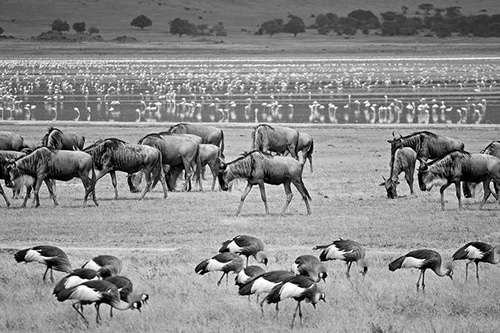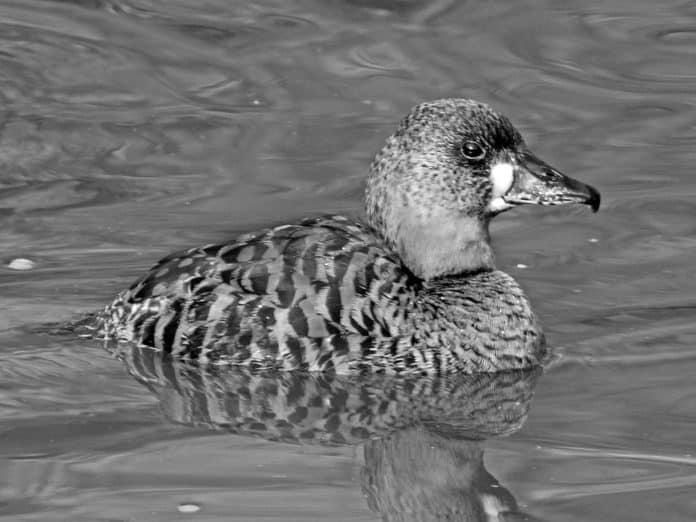Witness the Majestic White Backed Duck in Tanzania: A Guide to Spotting and Understanding this Exquisite Waterbird
Welcome to Tanzania, a country known for its breathtaking wildlife and diverse ecosystems. Among the many magnificent creatures that call this land home, the White Backed Duck stands out as a true gem. With its striking appearance and fascinating behavior, this waterbird has become a favorite among bird watchers and nature enthusiasts. In this guide, we will delve into the world of the White Backed Duck in Tanzania, exploring its habitat, physical characteristics, behavior, and more. So grab your binoculars and let’s embark on an adventure to witness the majestic White Backed Duck in Tanzania.
Overview of the White Backed Duck species
The White Backed Duck, scientifically known as Thalassornis leuconotus, is a medium-sized waterbird that belongs to the family Anatidae. It is characterized by its unique coloration and distinctive features. The name “White Backed Duck” is derived from the white plumage on its back, which contrasts beautifully with the rest of its body. The duck has a dark brown head, neck, and breast, while its wings and tail are a deep black. Its bill is short and stubby, perfectly adapted for its feeding habits.
Habitat and distribution of the White Backed Duck in Tanzania
The White Backed Duck can be found in various wetland habitats across Tanzania. These include lakes, ponds, swamps, and marshes. They are particularly abundant in the eastern and southern regions of the country, where there is an abundance of water bodies. Some of the prime locations for observing the White Backed Duck in Tanzania include the Selous Game Reserve, Lake Manyara National Park, and the Kilombero Valley. These areas provide the perfect combination of water sources and vegetation, creating an ideal habitat for these waterbirds.
Physical characteristics and behavior of the White Backed Duck
Measuring around 45-50 centimeters in length, the White Backed Duck is a relatively small waterbird. Despite its size, it possesses incredible agility and adaptability. Its webbed feet enable it to navigate through the water with ease, while its streamlined body allows for efficient swimming and diving. The White Backed Duck is primarily a herbivore, feeding on aquatic plants, seeds, and grasses. It is often seen foraging in shallow water, using its bill to sift through the mud and vegetation in search of food.
Spotting and identifying the White Backed Duck in the wild
If you’re hoping to spot a White Backed Duck in the wild, there are a few key features to look out for. As its name suggests, the most prominent characteristic is the white plumage on its back. This stark contrast against its dark body makes it relatively easy to identify. Additionally, its small size, dark head, and short bill are also distinguishing factors. When observing the White Backed Duck, keep an eye out for its behavior as well. It is known to swim low in the water, often with only its head and neck visible, making it somewhat elusive and challenging to track.
Understanding the diet and feeding habits of the White Backed Duck
The White Backed Duck is primarily a herbivore, with its diet consisting mainly of aquatic plants, seeds, and grasses. It is commonly found in areas with abundant vegetation, where it can easily access its preferred food sources. Using its bill, the duck sifts through the water and mud, filtering out small invertebrates and other organic matter. It is fascinating to observe the White Backed Duck as it gracefully maneuvers through the water, searching for its next meal. By understanding its feeding habits, we gain a deeper appreciation for its role in maintaining the delicate balance of the ecosystem.
Breeding and nesting patterns of the White Backed Duck
Breeding season for the White Backed Duck typically occurs during the rainy season, when water levels are high and food sources are abundant. The male performs an elaborate courtship display, involving head-bobbing, wing-flapping, and vocalizations, to attract a mate. Once a pair is formed, they will search for a suitable nesting site, often in dense vegetation near the water’s edge. The female constructs a nest out of plant material, creating a safe haven for her eggs. She will lay around 6-8 eggs, which both parents take turns incubating for approximately 28 days. It is a joyous occasion to witness the hatching of the ducklings, as they emerge from their shells and embark on their first adventure into the water.
Conservation status and threats to the White Backed Duck population
While the White Backed Duck is not currently classified as endangered, its population is declining in certain regions. Habitat destruction and pollution are major threats, as wetlands continue to be drained for agriculture and urban development. Additionally, hunting and poaching pose a significant risk to the survival of these waterbirds. It is crucial that we take action to protect their habitats and raise awareness about their importance in the ecosystem. By doing so, we can ensure the continued existence of this exquisite species for future generations to appreciate and admire.
Best locations in Tanzania for observing the White Backed Duck

Tanzania is blessed with an array of stunning locations where you can observe the White Backed Duck in its natural habitat. One such place is the Selous Game Reserve, a UNESCO World Heritage Site and the largest protected wildlife area in Africa. Here, you can embark on a boat safari along the Rufiji River, where the White Backed Duck can often be spotted gliding gracefully through the water. Lake Manyara National Park is another excellent destination, known for its diverse birdlife. The alkaline lake provides the perfect conditions for the White Backed Duck to thrive. Lastly, the Kilombero Valley is a hidden gem, offering a tranquil setting where you can immerse yourself in the wonders of nature and encounter the White Backed Duck up close.
Tips for successful spotting and photography of the White Backed Duck
Spotting and photographing the White Backed Duck requires patience, keen observation skills, and the right equipment. Here are a few tips to help you make the most of your experience:
- Research and Plan: Familiarize yourself with the behavior and habitat of the White Backed Duck before your trip. This will enable you to choose the best locations and times for observation.
- Be Silent and Still: These waterbirds can be easily startled, so it’s important to remain quiet and avoid sudden movements. Find a comfortable spot and wait patiently for the ducks to come into view.
- Use Binoculars and Telephoto Lens: Binoculars will help you spot the ducks from a distance, while a telephoto lens will allow you to capture detailed photographs without disturbing their natural behavior.
- Observe from a Distance: It is essential to respect the wildlife and maintain a safe distance. This ensures that you do not cause any distress to the ducks and allows for a more authentic observation experience.
Conclusion: Appreciating the beauty and importance of the White Backed Duck in Tanzania
As we conclude our guide to the White Backed Duck in Tanzania, we hope that you have gained a deeper understanding and appreciation for this exquisite waterbird. From its unique physical characteristics to its fascinating behavior, the White Backed Duck is truly a marvel of nature. By venturing into the wetlands and observing these birds in their natural habitat, we can witness their majesty firsthand. Let us remember to protect their habitats and raise awareness about their conservation needs. Together, we can ensure that future generations have the opportunity to witness the beauty of the White Backed Duck in Tanzania.
For more articles related to Wildlife in Tanzania (Animals), click here!

































